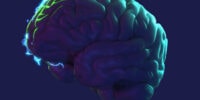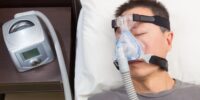What Are Antispasmodic Medications And How Do They Relieve Muscle Cramps?

Muscle cramps are a common and often painful condition that can significantly impact a person’s quality of life. Antispasmodic medications are commonly used to relieve muscle cramps and provide relief to individuals suffering from this condition.
This article aims to explore the nature of muscle cramps, define antispasmodic medications, and investigate how they alleviate muscle cramps. By targeting the underlying cause of muscle cramps, antispasmodic medications work to relax and soothe the affected muscles, thereby reducing pain and discomfort.
It is important to understand the benefits and effectiveness of these medications, as well as any potential side effects and precautions that should be taken into consideration. Additionally, alternative treatment options will be discussed, along with the importance of consulting with a healthcare professional to determine the most appropriate course of action.
Overall, this article aims to provide a comprehensive overview of antispasmodic medications and their role in relieving muscle cramps.
Key Takeaways
- Antispasmodic medications target muscles and reduce excessive contractions, relieving muscle tension and preventing future cramps.
- Lifestyle changes such as hydration, a balanced diet, and regular exercise can help prevent muscle cramps.
- Non-pharmacological methods like stretching exercises and stress reduction techniques can reduce the frequency and severity of muscle cramps.
- Consultation with a healthcare professional is crucial for guidance and personalized treatment, as they can evaluate medical history and perform physical examinations to determine the underlying cause of muscle cramps.
Understanding Muscle Cramps
Muscle cramps, a common phenomenon experienced by individuals of all ages, can be better understood by exploring the underlying causes and mechanisms that lead to their occurrence.
Cramps are involuntary muscle contractions that can occur in any muscle, causing pain and discomfort. They are often caused by muscle fatigue, dehydration, electrolyte imbalances, or inadequate stretching. Muscle cramps can also be a symptom of underlying medical conditions such as peripheral artery disease or nerve compression.
Prevention of muscle cramps involves maintaining proper hydration, ensuring adequate intake of electrolytes, stretching before exercise, and avoiding overexertion. Despite these preventive measures, muscle cramps can still occur, leading individuals to seek relief through various methods, including antispasmodic medications.
These medications work by relaxing the muscles and reducing the frequency and intensity of muscle contractions, providing relief from muscle cramps.
What are Antispasmodic Medications?
Antispasmodic medications are a class of drugs that are used to alleviate involuntary contractions of skeletal muscles. These medications work by targeting the nervous system and relaxing the muscles, relieving muscle cramps and spasms. They can be prescribed for various conditions that involve muscle cramps, such as muscle strains, spasticity, and certain neurological disorders.
Like any medications, antispasmodic drugs can have side effects. Common side effects may include drowsiness, dizziness, dry mouth, and blurred vision. It is important to take precautions when using antispasmodic medications, especially when operating machinery or driving, as they can impair motor skills.
While antispasmodic medications can be effective in relieving muscle cramps, alternative treatments such as physical therapy, stretching exercises, and applying heat or cold packs may also be beneficial. It is advised to consult with a healthcare professional before starting any new medication or treatment plan to ensure proper guidance and minimize potential risks.
Targeting the Underlying Cause of Muscle Cramps
Muscle relaxation and reducing nerve activity are two key strategies for targeting the underlying cause of muscle cramps.
By promoting muscle relaxation, antispasmodic medications help to relieve the involuntary contractions that lead to cramping.
Additionally, these medications work by reducing nerve activity, which can help to prevent the overstimulation of muscles and minimize the occurrence of cramps.
Muscle Relaxation
The process of inducing muscle relaxation can be achieved through the use of antispasmodic medications. These medications work by targeting the underlying cause of muscle cramps, which is often muscle tension.
Muscle relaxation is achieved by acting on the muscles themselves or the neural pathways that control muscle contractions. Antispasmodic medications can directly affect the muscles by inhibiting muscle contractions or by promoting muscle relaxation. They can also work by affecting the nervous system, specifically the neurotransmitters that regulate muscle contractions.
By reducing muscle tension and promoting muscle relaxation, antispasmodic medications help relieve muscle cramps. It is important to note that antispasmodic medications should be used under the guidance of a healthcare professional, as they may have side effects and interactions with other medications.
Reducing Nerve Activity
Reducing nerve activity plays a crucial role in addressing the underlying causes of muscle cramps. By targeting the nerves that control muscle contractions, antispasmodic medications effectively reduce muscle tension and calm involuntary muscle contractions.
These medications work by blocking or inhibiting the transmission of nerve signals, thereby preventing excessive nerve activity that leads to muscle cramps. The reduction in nerve activity allows the muscles to relax, relieving the discomfort and pain associated with muscle cramps.
In order to engage the audience, here are three key points about reducing nerve activity and its role in relieving muscle cramps:
- Antispasmodic medications target the nerves that control muscle contractions, reducing muscle tension.
- These medications work by blocking or inhibiting nerve signals, preventing excessive nerve activity.
- By reducing nerve activity, these medications help the muscles relax and relieve the pain associated with muscle cramps.
Common Side Effects and Precautions
Common side effects and precautions associated with antispasmodic medications can be observed, such as drowsiness, dry mouth, and blurred vision, leading individuals to take necessary precautions when using these medications to relieve muscle cramps. It is important for patients to be aware of these potential side effects and to discuss them with their healthcare provider. While these side effects are generally mild and temporary, they can still impact an individual’s daily activities and overall well-being. To manage these side effects, individuals can try alternative therapies, such as physical therapy, heat or cold therapy, or relaxation techniques. These therapies can complement the effects of antispasmodic medications and provide additional relief from muscle cramps. It is crucial for individuals to follow their healthcare provider’s instructions, report any concerning side effects promptly, and discuss any concerns or questions they may have regarding their antispasmodic medication.
| Side Effects Management | Alternative Therapies |
|---|---|
| – Drowsiness | – Physical Therapy |
| – Dry Mouth | – Heat or Cold Therapy |
| – Blurred Vision | – Relaxation Techniques |
Benefits and Effectiveness of Antispasmodic Medications
One notable advantage of using antispasmodic medications is their ability to alleviate discomfort and enhance overall well-being. These medications are specifically designed to target and relieve muscle cramps, spasms, and tightness.
By acting on the nervous system, antispasmodic medications help to relax and calm the muscles, reducing pain and promoting relaxation.
The benefits and effectiveness of antispasmodic medications can be summarized as follows:
- Rapid relief: Antispasmodic medications can provide quick relief from muscle cramps, helping individuals to regain their daily activities without discomfort.
- Improved quality of life: By reducing muscle cramps and spasms, these medications can enhance overall well-being and improve the quality of life for those suffering from muscle-related pain.
- Treatment of underlying conditions: Antispasmodic medications can also be used to treat the underlying conditions that cause muscle cramps, such as multiple sclerosis or irritable bowel syndrome.
- Minimized side effects: Compared to other muscle relaxants, antispasmodic medications often have fewer side effects, making them a favorable option for many individuals.
Overall, antispasmodic medications offer several benefits and are effective in relieving muscle cramps, providing relief and improving the overall well-being of individuals.
Alternative Treatment Options
Alternative treatment options for muscle cramps include various non-pharmacological methods that aim to alleviate discomfort and promote relaxation. Natural remedies such as applying heat or cold packs to the affected area, stretching exercises, and massaging the cramped muscle can provide relief.
Heat therapy, such as warm baths or heating pads, helps to increase blood flow and relax the muscles, while cold therapy, such as ice packs, reduces inflammation and numbs the area. Additionally, gentle stretching exercises can help to relieve muscle tension and prevent future cramps. Massaging the cramped muscle can also help to increase blood flow and promote relaxation.
Lifestyle changes, such as staying hydrated, maintaining a balanced diet, and getting regular exercise, can also help to prevent muscle cramps. These non-pharmacological methods can be effective in reducing muscle cramp frequency and severity without the need for antispasmodic medications.
Consultation with a Healthcare Professional
Consultation with a healthcare professional is crucial for receiving proper guidance and personalized treatment options for managing muscle cramps.
A healthcare provider can evaluate the individual’s medical history, conduct a physical examination, and determine the underlying cause of the muscle cramps. This information is essential in developing an effective treatment plan.
The healthcare provider may recommend various treatment options based on the severity and frequency of the muscle cramps. These options can include lifestyle modifications, such as stretching exercises, hydration, and stress reduction techniques.
Additionally, the healthcare provider may prescribe antispasmodic medications to relieve muscle cramps. These medications work by targeting the muscles and reducing their excessive contractions.
The healthcare provider will monitor the individual’s response to the treatment and make necessary adjustments to ensure optimal management of muscle cramps.
Conclusion and Final Thoughts
In conclusion, it is imperative to seek professional guidance and personalized treatment options in order to effectively manage and alleviate muscle cramps. While antispasmodic medications can be effective in providing relief, it is important to consider alternative treatments as well.
Some individuals may find relief through non-pharmacological approaches such as stretching exercises, heat or cold therapy, and physical therapy. These alternative treatments can help in reducing muscle spasms and preventing future occurrences.
Additionally, it is crucial to consider the long-term effects of antispasmodic medications. These medications may have side effects such as drowsiness, dizziness, and dry mouth. Consulting with a healthcare professional can help in weighing the benefits and risks of using antispasmodic medications and exploring other treatment options for long-term management of muscle cramps.
Frequently Asked Questions
Are muscle cramps only caused by dehydration or overuse of muscles?
Muscle cramps can be caused by both dehydration and overuse of muscles. Dehydration causes an imbalance in electrolytes, leading to muscle contractions. Overuse of muscles can result in fatigue and the development of cramps.
Can antispasmodic medications be used to treat muscle cramps in children?
Antispasmodic medications have been used to treat muscle cramps in children. Studies have shown their effectiveness in reducing muscle spasms and relieving pain. However, further research is needed to determine their long-term effects and optimal dosages for pediatric patients.
Are there any dietary changes that can help prevent muscle cramps?
Dietary changes, such as increasing fluid intake, consuming foods high in electrolytes, and maintaining a balanced diet with adequate intake of vitamins and minerals, can help prevent muscle cramps. Natural remedies, such as taking magnesium supplements, may also be beneficial.
How long does it take for antispasmodic medications to start relieving muscle cramps?
The effectiveness of antispasmodic medications in relieving muscle cramps varies, but they typically start to take effect within a short period of time. The duration of their effects can also vary depending on the specific medication being used.
Can antispasmodic medications be used as a long-term solution for chronic muscle cramps?
Antispasmodic medications can be used as a long-term solution for chronic muscle cramps, but their long-term effectiveness may vary. Alternative treatments such as physical therapy and stretching exercises may also be considered.









